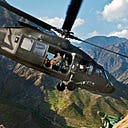
Member-only story
From Hand Rails to Eight Wheels: the BTR-60 Armoured Personnel Carrier and its Successors
If you were to casually peep through any book about the Eastern Front in World War 2, dozens of photos of Soviet soldiers clinging to the handrails of T-34 tanks racing to the front line will adorn the pages. A dangerous practice forced on the Red Army by the inability of unarmoured road bound trucks to keep pace with the tanks and assault guns that were prioritized by Soviet industry, tank riding did not last far beyond the end of the conflict. By the time the Soviet Union disaggregated in December 1991, its ground forces had completed their transformation into a fully mechanized colossus. While tanks and tracked BMP infantry fighting vehicles were the most heavily armed and threatening members of Soviet ground forces (excluding artillery and tactical ballistic missiles), the honour of most numerically prevalent combat vehicle belongs to the eight wheeled BTR-60PB (bronetransporter: armoured transporter) and its successors, the BTR-70 and BTR-80.
The development path to the BTR-60 arose from the Soviet Army’s (the Red Army rebranded in 1946) quest for a highly mobile infantry transport that may keep up with tanks and shield its troops from small arms fire and shrapnel. The Soviets had plenty of experience fighting against the SdKfz 250 and 251s of Nazi Germany’s Panzer Grenadier regiments but only received a token number of US M3 half tracks and British Universal Carriers through the Western Allies’ Lend Lease as mobile command posts. With more cross country capability than wheeled transports, they were popular during the war since they shared similar driving characteristics to conventional trucks, hastening driver training compared to tracks. Half tracks fell out of favour and no new designs were produced by any country at the war’s end because they created the same maintenance burdens of tracked vehicles but were no where fast as wheels only carriages.

While the US and the UK in the 1950s onwards focused on tracked armoured personnel carriers (APCs) after divesting all their half tracks to foreign allies, the Soviet Union chose to develop both tracked and wheeled mounts. Their…
